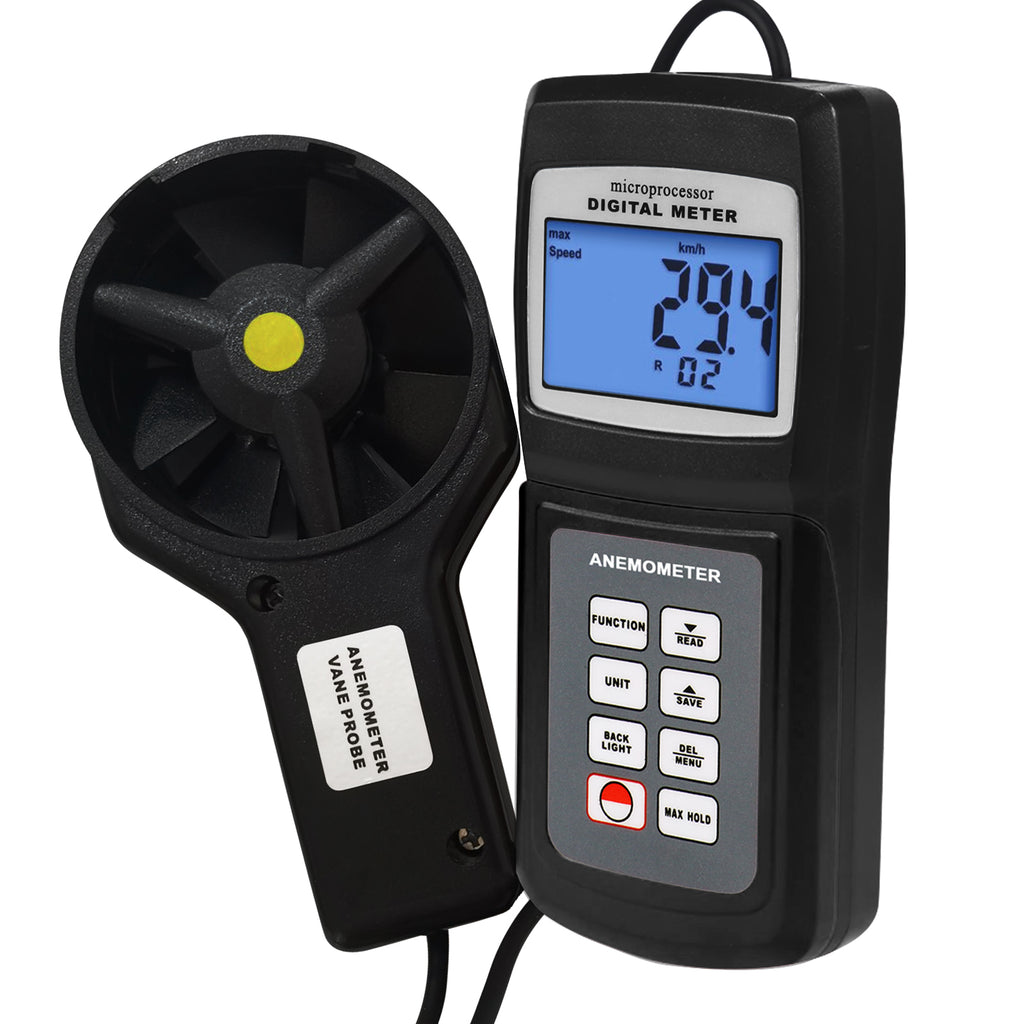Discovering the Features and Advantages of Anemometers for Climate Fanatics and Specialists
From cup anemometers to sonic anemometers, each type brings its one-of-a-kind collection of applications and benefits, dropping light on various facets of atmospheric conditions. As we dig into the features and benefits of anemometers, a much deeper understanding emerges not just of dominating weather sensations however also of the wider implications for fields like wind energy manufacturing and environmental study.
Value of Anemometers in Weather Surveillance
Anemometers play a critical function in climate tracking by giving precise dimensions of wind speed, assisting in forecasting and understanding weather condition patterns. These tools, ranging from typical cup anemometers to modern-day ultrasonic anemometers, are important for meteorologists, scientists, and weather lovers alike. By gauging wind speed, anemometers assist in determining the intensity of climate phenomena such as tornados, storms, and tornadoes. Additionally, they supply beneficial data for aviation, maritime operations, and different sectors that are delicate to wind conditions.

Sorts Of Anemometers and Their Applications
The most common kinds of anemometers include mug anemometers, vane anemometers, hot-wire anemometers, and ultrasonic anemometers. Cup anemometers are composed of three or 4 mugs installed on horizontal arms that turn with the wind, measuring its speed. Vane anemometers, on the various other hand, utilize an openly turning vane to straighten with the wind direction, giving both wind speed and instructions measurements.
Each sort of anemometer has its unique benefits and applications. Mug anemometers are robust and ideal for basic weather tracking, while vane anemometers are preferred for directional measurements. Hot-wire anemometers are delicate to reduced air velocities, making them excellent for indoor atmospheres. Ultrasonic anemometers are non-intrusive and offer high precision, usually used in research study and specialized climate monitoring applications. Comprehending the features and applications of each sort of anemometer is vital for picking the most suitable tool for details weather keeping an eye on demands.
Benefits of Making Use Of Anemometers in Projecting
In weather forecasting, the use of anemometers uses vital benefits for improving the accuracy of weather forecasting. Anemometers gauge wind rate and instructions, offering essential data for predicting climate patterns. By including wind data into projecting versions, meteorologists can better understand the activity of climate systems, expect changes in weather, and problem more specific projections.
Furthermore, anemometers play an important duty in examining prospective weather threats. Keeping an eye on wind speeds aids forecasters anticipate severe weather condition events such as typhoons, twisters, and winter season tornados with higher precision. This early caution system allows authorities to issue prompt alerts and apply required safety and security procedures, reducing the dangers to life and residential property.
Additionally, anemometers aid in optimizing renewable resource production. By assessing wind patterns, meteorologists can identify ideal locations for wind ranches and forecast energy outcome, adding to the efficient generation of wind power.

Anemometers in Wind Energy Production
Provided the important duty anemometers play in providing precise wind information for climate projecting and threat assessment, their importance encompasses the world of wind power manufacturing. Anemometers are crucial instruments in visit the website the field of wind energy, where the measurement of wind speed and direction is important for figuring out the usefulness and performance of wind generator installments. By properly gauging wind rates at differing elevations, anemometers aid maximize the positioning and layout of wind generators to make the most of energy outcome.
In wind farms, anemometers are strategically put to gather real-time wind information that is utilized to examine the prospective power production of a site. This data is instrumental in identifying the economic viability of wind power tasks and in projecting energy generation to ensure grid stability. In addition, anemometers help in keeping an eye on wind conditions to optimize turbine efficiency, stop damage from high winds, and ensure the safety and security of employees functioning in the vicinity of wind generators.
Enhancing Climate Comprehending With Anemometers

Anemometers play a vital duty in boosting our understanding of microclimates. These local weather can vary considerably from broader regional projections, making it vital to have exact information for certain areas. anemometer. By strategically placing anemometers in numerous areas, researchers can gather detailed details on just how wind behaves in click here for more info different surfaces, metropolitan atmospheres, or bodies of water
Moreover, anemometers add to enhancing weather condition forecasting versions by supplying real-time data on wind actions. This info is particularly valuable for forecasting serious weather occasions, enhancing farming methods, and supporting sectors like air travel and maritime navigation. Generally, anemometers are indispensable instruments that allow us to delve much deeper into the intricacies of weather systems, inevitably resulting in even more better-informed choices and precise forecasts.
Conclusion
In verdict, anemometers play an essential function in climate surveillance and forecasting by determining wind speed and instructions. Anemometers additionally have applications in wind power production, further highlighting their importance in both weather forecasting and eco-friendly power sectors.
From cup anemometers to sonic anemometers, each type brings its distinct collection of benefits and applications, losing light on numerous facets of atmospheric conditions. These instruments, ranging from conventional cup anemometers to contemporary ultrasonic anemometers, are vital for meteorologists, scientists, and weather condition lovers alike. The most usual kinds of anemometers consist of mug anemometers, vane anemometers, hot-wire anemometers, and ultrasonic anemometers. Mug anemometers are robust browse this site and appropriate for general weather condition surveillance, while vane anemometers are preferred for directional dimensions. Anemometers are crucial tools in the area of wind power, where the dimension of wind speed and direction is essential for identifying the expediency and efficiency of wind generator installments.